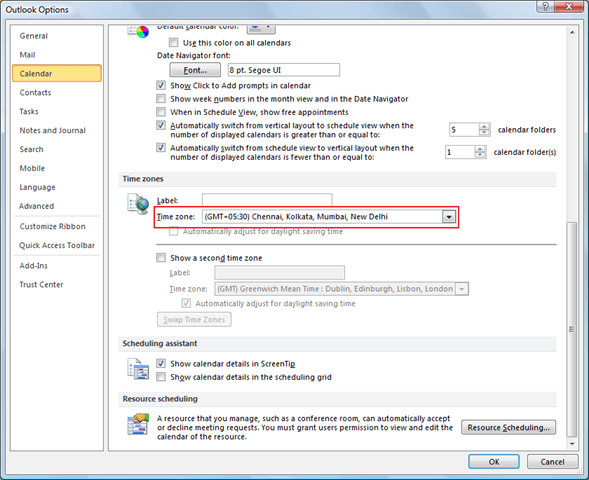
However, recurring meetings may need to be modified at some point-users may need to be added or removed, the meeting location may change, or attachments may be added to the meeting invitation. Outlook will display a new window with the option to define the recurrent meeting parameters: the start and end times, the number of days per week (or month) the meeting will take place, and so on.
Microsoft outlook time zone issues series#
Whenever you set up a meeting as a recurrent series, it’s a good idea to always set the end date and possibly limit the recurring series to an exact number of occurrences. This is because non-processed meeting requests can (at least in the long term) generate a wide range of issues, such as strange calendar behavior and invite inconsistencies. Processing All Meeting Requests and CancellationsĮven though you can just delete meeting requests straight from your Inbox, you should always remember to correctly process them by either accepting or declining on the Meeting tab. However, the e-mail won’t contain the recipient yet, as this will need to be defined by the sender. This will compose an e-mail with all the meeting information ready to be sent. If you want to invite someone else to the same meeting without sending them an Outlook Calendar meeting request, simply drag the meeting request from your Outlook Calendar to the Mail icon on the bottom-left corner of the screen. Instead of forwarding the meeting request to someone else, you should simply ask the meeting organizer to add the new attendee to the original meeting request. Some users have noted that forwarding meeting requests can lead to lost or incorrect invites. Outlook Calendar Best Practices Forwarding Meeting Requests On the Outlook Meeting tab, click on Tracking. The meeting organizer can monitor invitation responses for specific recipients via the Outlook Tracking feature. The Time Zones tool is very handy when scheduling a meeting with someone located in a different time zone, making it easier to plan meetings that fit everyone’s schedules. The color legend at the bottom of the Scheduling Assistant interface clarifies what the different colors mean (Busy, Tentative, Out of Office, Working Elsewhere, No Information, and Outside of working hours). To access this feature, simply click on Scheduling Assistant on the main Meeting scheduling tab. Outlook Calendar comes with the Scheduling Assistant, an excellent feature that informs you of a contact’s availability on the date or time for which you are planning a meeting. Useful Outlook Calendar Features Scheduling Assistant

This is what an invite will look like in their Outlook Calendar:

They can also propose changes to the meeting time, date, location, etc. When you send out a meeting invite, the recipient is able to accept, accept tentatively, or decline the invite. To view the meeting, go to the bottom left corner and click on the Calendar icon.Īt this point, you just have to wait for the attendees to accept your invitation! All listed attendees will also be able to view the meeting on their calendars once they accept your invitation. Once your invitation has been sent, the scheduled meeting will appear on your calendar. When you’ve filled out all the relevant details for your meeting, click Send to send out the invitation. In a corporate environment, Outlook will typically look for the chosen users in the Global Address list. Outlook will open a new window where you can list the attendees you wish to invite, define the time and date for the meeting, and fill out the subject field. To schedule a meeting, simply select your Inbox, click on New Items, and select New Meeting. When you plan a new meeting in Outlook Calendar, you can set the topic, specify the attendees, and define when and where the meeting will take place, all from a single interface. Scheduling a Meeting with Outlook Calendar



 0 kommentar(er)
0 kommentar(er)
